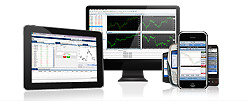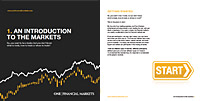

Japanese Yen Dips After Record Trade Deficit, Asia FX Weakens
By Ambar Warrick
Investing.com-- The Japanese yen was among the worst-performing Asian currencies on Thursday after the country logged a record trade deficit for August, while fears of more hawkish measures by the Federal Reserve weighed on most regional units.
The yen fell 0.2% to 143.43 to the dollar, hovering just above a 24-year low hit earlier this month. Rising energy imports by Japan saw the country log a record-high trade deficit of 2.82 trillion yen ($1.97 billion) in August.
The yen is among the worst-performing Asian currencies this year, hit chiefly by the growing gap between U.S. and Japanese interest rates. The Bank of Japan has signaled no intent to raise rates this year, given that the Japanese economy is still reeling from the effects of the COVID-19 pandemic.
Broader Asian currencies also retreated, while the dollar stuck to near 20-year highs after data showed U.S. producer price inflation mirrored strength seen earlier in the consumer price index.
The dollar index and futures both rose 0.1%. With U.S. inflation remaining stubbornly high in August, the Fed now has more impetus to keep raising rates sharply.
Markets are now pricing in the possibility that the Fed will hike rates by as much as 100 basis points next week, although a majority of traders expect a 75 basis point hike.
China’s yuan weakened 0.1% but traded near a two-year low hit last month. The People’s Bank of China (PBoC) on Thursday paused its monetary easing measures, as a hawkish outlook for U.S. interest rates limited the bank’s maneuvering space.
The Chinese government is struggling to shore up economic growth after a series of COVID lockdowns ground activity to a halt this year.
The yuan now faces the risk of falling below the psychologically important 7 to the dollar mark for the first time in over two years.
Headwinds from a stronger dollar have battered most Asian currencies this year. The South Korean won was trading at its weakest level in 13 years.
In the Asia-Pacific region, the New Zealand dollar traded flat after data showed the country’s economy rebounded more than expected in the second quarter, thanks to loosening COVID restrictions.
Australia’s dollar rose 0.2% after data showed continued strength in the country’s job market, although unemployment also rose slightly.
Begin trading today! Create an account by completing our form
Privacy Notice
At One Financial Markets we are committed to safeguarding your privacy.
Please see our Privacy Policy for details about what information is collected from you and why it is collected. We do not sell your information or use it other than as described in the Policy.
Please note that it is in our legitimate business interest to send you certain marketing emails from time to time. However, if you would prefer not to receive these you can opt-out by ticking the box below.
Alternatively, you can use the unsubscribe link at the bottom of the Demo account confirmation email or any subsequent emails we send.
By completing the form and downloading the platform you agree with the use of your personal information as detailed in the Policy.






